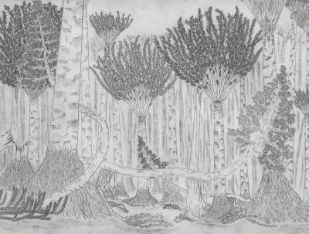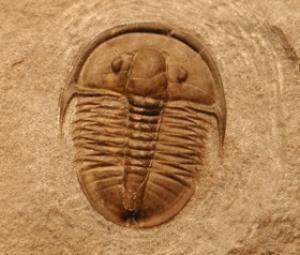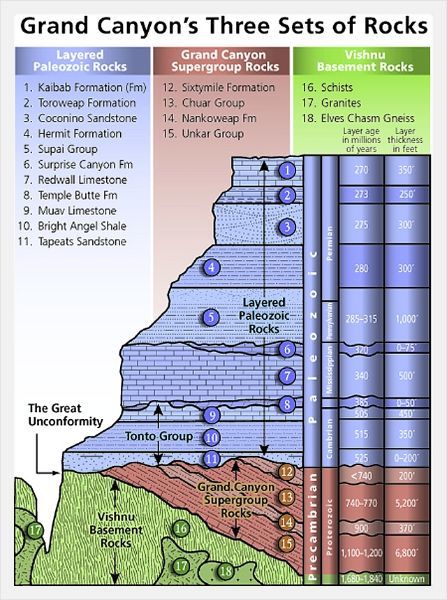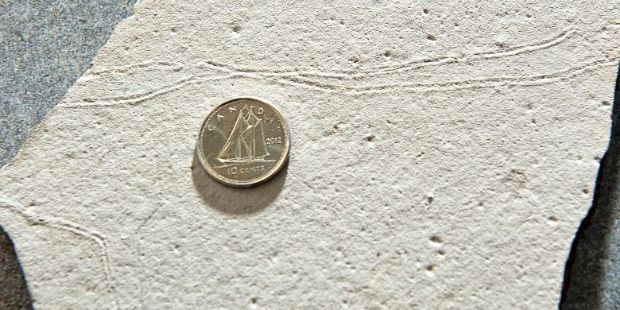page 2
~ The Study of Threes ~
http://threesology.org
The title "Three-patterned Geophysical Influences" is intended to describe and correlate Geophysical events with three-patterned occurrences taking place in the domains of biology/genetics. The pages under the Geophysical influences heading are companions to the pages starting at:
In short, I am correlating three-patterned ideas that can be found with the Planetary and Geophysical activity related to the Earth and three-patterned occurrences found in biology/genetics (or some might say the genetics of biology and the biology of genetics). If we can or can not substantiate that the Sun's three "moments" (Dawn- Noon- Dusk) played a role in the formation of "threes" found in biology/genetics (such as DNA's triplet coding system), the fact that the Sun is enlarging as it decays along with a reduction in the rate of Earth's rotation, may or may not indicate predictable consequences for life on Earth.
The following (shortened) example is derived from:
EMC Community Network - ECN Quantum Backuptron Solar System IV Earth and Moon
...We live in a unique environment and Earth is the only planet we know that has an oxygen-rich atmosphere, as well as hydrosphere that is vital for complex life. But the Earth's early atmosphere was oxygen-poor in the Archaean prior to the Great Oxidation Event, which happened between 2.5 and 2.3 billion years ago, so it's vital that we understand how oxygen rose.
A Recent study by Mark Barley has identified how links between tectonics and ocean and land chemistry combined to give rise to life on earth about 2.5 billion years ago, during a period known as the Great Oxidation Event (GOE). The GOE changed surface environments on Earth and ultimately made advanced life possible. Research team found a rising abundance of chromium in the banded iron formations starting 2.48 billion years ago, which was an important indication of links between life and the growth of continents. Using this data, they were able to see cyanobacteria had started to produce oxygen, and that aerobic respiring chemolithotrophic bacteria oxidized pyrite linked to acid rock drainage that dissolved chromium on land and added chromium and sulphate to the ocean. This confirms that the 2.48 to 2.32 billion year period was the protracted GOE which eventually helped the formation of complex life.
More than 2 billion years ago, a much fainter sun should have left Earth as an orbiting ice ball, unfit to develop life as we know it today. Why Earth avoided the deep freeze is a question that has puzzled scientists. If you go back in time to about 2 billion years ago, the Earth should have been frozen over. There's a lot of geological evidence that the Earth wasn't frozen over. So, what is not equal? That is the so called Faint Young Sun Paradox.
Purdue University's David Minton has offered a new explanation of why Earth avoided freezing over during a period when, according to geological and astrophysical observations, the sun burned at about only 70% of its current brightness. In short, he believes our planet might have been in a warmer place. To keep the Earth from being frozen over at the beginning of its history, it would have to be 6% or 7% closer to the Sun than it is now. It's a few million km, but from an orbital mechanics standpoint, it's not that far. The question is what could make a planet move from one location to another? Minton proposes Earth may have migrated from the sun over time through a process called planet-planet scattering, which occurs when one planet or more is ejected from its orbit, an increase in orbital separation occurs, or when planets collide.
There are many possible ways a planet could move, but Minton said most alternatives could be ruled out because of the timeline involved. And while most theories can be ruled out, planet-planet scattering is not ruled out. When a planet system or solar system forms there is no knowledge of how long they will be stable. They form and then they can go unstable in some time scale, and that time scale is set arbitrarily. Most of the instabilities happen early, and the longer you go in history, the more rare instabilities become. But rare does not mean never, and rare events can happen.
Minton speculates two proto-Venus planets existed at one point and went into a chaotic and unstable phase, crossing Earth's path and boosting us to our familiar orbit. The two proto-Venus planets then collided, forming the planet Venus that exists today. One way we could have ruled this out would be if Venus had a geological history older than 2 billion years ago. We know, though, Venus is a relatively young planet. The oldest surface on Venus is estimated to be 500 million to 700 million years old, a relatively young surface by planetary science standards. Impact craters on Earth can stretch back 1 billion to 2 billion years old, with a variety of ages on the surface. This hypothesis of the Faint Young Sun Paradox fits the evolution of Venus.

It is very hard to determine when life begun on Earth. Earlier this year an international team, including a Cardiff University researcher who previously found evidence of Earth's earliest tree, has gone one step further - they have unearthed and investigated an entire fossil forest dating back 385 million years. The Gilboa fossil forest, in the Catskill Mountains in upstate New York, is generally referred to as "the oldest fossil forest". One of the biggest surprises was that the researchers found many woody horizontally-lying stems, up to about 15cm thick, which they have demonstrated to be the ground-running trunks of another type of plant, only previously known from its upright branches. They also found one large example of a tree-shaped club moss, the type of tree that commonly forms coal seams in younger rocks across Europe and North America.

The oceans teemed with life 600 million years ago, but the simple, soft-bodied creatures would have been hardly recognizable as the ancestors of nearly all animals on Earth today. Then something happened. Over several tens of millions of years - a relative blink of an eye in geologic terms - a burst of evolution led to a flurry of diversification and increasing complexity, including the expansion of multicellular organisms and the appearance of the first shells and skeletons. The results of this Cambrian explosion are well documented in the fossil record, but its cause - why and when it happened, and perhaps why nothing similar has happened since - has been a mystery.
New research shows that the answer may lie in a second geological curiosity - a dramatic boundary, known as the Great Unconformity, between ancient igneous and metamorphic rocks and younger sediments. The Great Unconformity is a very prominent geomorphic surface and there's nothing else like it in the entire rock record. Occurring worldwide, the Great Unconformity juxtaposes old rocks, formed billions of years ago deep within Earth's crust, with relatively young Cambrian sedimentary rock formed from deposits left by shallow ancient seas that covered the continents just a half billion years ago.
Named in 1869 by explorer and geologist John Wesley Powell during the first documented trip through the Grand Canyon, the Great Unconformity has posed a longstanding puzzle and has been viewed (by Charles Darwin, among others) as a huge gap in the rock record and in our understanding of Earth's history. But the gap itself - the missing time in the geologic record - may hold the key to understanding what happened. At least one theory states that the same geological forces that formed the Great Unconformity may have also provided the impetus for the burst of bio-diversity during the early Cambrian.
There is an hypothesis that bio-mineralization evolved as a bio-geochemical response to an increased influx of continental weathering products during the last stages in the formation of the Great Unconformity. During the early Cambrian, shallow seas repeatedly advanced and retreated across the North American continent, gradually eroding away surface rock to uncover fresh basement rock from within the crust. Exposed to the surface environment for the first time, those crustal rocks reacted with air and water in a chemical weathering process that released ions such as calcium, iron, potassium, and silica into the oceans, changing the seawater chemistry. The basement rocks were later covered with sedimentary deposits from those Cambrian seas, creating the boundary now recognized as the Great Unconformity.

Evidence of changes in the seawater chemistry is captured in the rock record by high rates of carbonate mineral formation early in the Cambrian, as well as the occurrence of extensive beds of glauconite: (containing)
- potassium-,
- silica-,
- iron-rich
A mineral that is much rarer today. The influx of ions to the oceans also likely posed a challenge to the organisms living there. Your body has to keep a balance of these ions in order to function properly - if you have too much of one you have to get rid of it, and one way to get rid of it is to make a mineral.
The fossil record shows that the three major bio-minerals:
- Calcium phosphate, now found in bones and teeth
- Calcium carbonate, in invertebrate shells
- Silicon dioxide, in radiolarians
...Appeared more or less simultaneously around this (geophysical) time and in a diverse array of distantly related organisms. The time lag between the first appearance of animals and their subsequent acquisition of bio-minerals in the Cambrian is notable. It's likely bio-mineralization didn't evolve for something, it evolved in response to something - in this case, changing seawater chemistry during the formation of the Great Unconformity. Then once that happened, evolution took it in another direction. Together, the results suggest that the formation of the Great Unconformity may have triggered the Cambrian explosion. A dozen different species in interstellar dust particles that formed the solar system have evolved to more than 4500 species today. Previous work from Carnegie's Bob Hazen demonstrated that up to two thirds of the known types of minerals on Earth can be directly or indirectly linked to biological activity.
Yet, while we correlate minerals with biological activity, the idea of planetary (which includes geophysical) processes being linked to biological activity, can take on claims that adherents of such are practicing some form of Biophysical Astrology. The frontiers of a research area that may develop into a new science do not have to begin in a University or Corporate lab. If we use such as the criteria by which we measure worthiness of consideration, then heaven help us all. (H.O.B.)
In June 2012, University of Alberta researchers have uncovered physical proof that animals existed 585 million years ago - 30 million years earlier than previous records showed. They found fossilized tracks a centimeter-long, slug-like animal left behind 585 million years ago in silty, shallow-water sediment. Fossilized tracks indicate that the soft-bodied animal's musculature enabled it to move through the sediment on the shallow ocean floor. The pattern of movement indicates an evolutionary adaptation to search for food, which would have been organic material in the sediment. There were no fossilized remains of a bilaterian's body, just its tracks. Generally when researchers find tracks of a soft-bodied animal, it means there's no trace of the body because they fossilize under different conditions. It's usually just the body or just the tracks, not both. Before this, the oldest sign of animal life was dated at 555 million years ago, from a find made in Russia.

Most of the world's species are still unknown to science although many researchers grappled to address the question of how many species there are on Earth over the recent decades. Estimates of non-microbial diversity on Earth provided by researchers range from 2 million to over 50 million species, with great uncertainties in numbers of insects, fungi, nematodes, and deep-sea organisms. Novel techniques, such as DNA barcoding, new databases and crowd-sourcing, could greatly accelerate the rate of species discovery. New technologies such as environmental DNA analyses now exist and can detect a species' presence from mere water samples without ever visually observing it. Data sharing technologies over the Internet about species locations and discoveries are also expediting and expanding the catalogue of life.
Simplistically, it'd not too difficult to understand that if the Earth or Sun didn't exist, it is likely we humans would not either. Unless you are one who opinions that some form of human could have (or has) arisen under different conditions. Yet, if we attempt to spell out any such "conditions" that go beyond a grasp of biblical doctrine, some people dismiss such an idea for one or more reasons. Some educated people dismiss any idea that is not taught in main stream academia, while others accept any notion, particularly those that are not taught in a typical classroom or lecture hall. However, there are a few who are truly open-minded and do not pretend such a notion given particular social circumstances where conventions of "open-mindedness" are concealed forms of tunnel vision blindness.
I'm not talking about those who disagree because they are unaware of additional information, but those who are informed of different information but personally choose to accept that which permits them a level of comfort because they hold a position as if they were a kid standing on some measure of "home base" and can not therefore be touched. For example, those who say that only (a) God knows. They feel confidently secure that no one can touch them and they will always have salvation because they hold a type of "Get out of jail free" card. They are extremely insecure individuals who prefer to use their energies in acquiring egotistically superficial social commodities instead of searching for answers that may not be found simply because the wrong questions are being asked. Many of them want to have some answer, be it right or wrong, and be socially viewed as having "THE" answer in order to fulfill some egocentric notion of worthiness. Some don't care if they are wrong, just so long as they appear right in their lifetime and are afforded commensurate social rewards to assist them in acquiring physical needs.
It is sometimes difficult to get research efforts noticed unless you beat others over the head. Alas, many good efforts go unnoticed in a researcher's lifetime because they fear any aggressive or assertiveness on their part may lead to a backlash of condemnatory reprisals whether they are deserving of such or not. They are fearful of being boastful in case they, metaphorically speaking, must don a sidearm and meet a competitor in the middle of a public street for a showdown. Some people are skilled in shooting down others proposals and suggestions, as if in doing so, they consider themselves to be more knowledgeable than another. Like an adolescent who builds themselves up by knocking someone or something down... when it takes greater courage and strength to assist a fledgling idea, whether or not it turns out to have any value... in its current or another form. Such people know that their efforts may all that is needed to encourage the enthusiastic efforts of a researcher seeking truth, because their present efforts may truly be the tip of an ice berg of that which they strive to offer humanity's efforts in furthering knowledge.
The concept of God and the many ideas attributed with such, may be an indication of a cognitive dead end. We don't readily recognize it because we don't know how to quantify the concept except with superfluous inferences. It doesn't matter if their is more than a billion people practicing the concept in various ways on a daily basis, they could all be exercising an acceptable mental activity "equatable" with that of a dead end. All of religion could likewise be a hole in the ground we stick our heads into. No less, our social, political, scientific, education and other philosophies could be similar cognitive dead ends. Most of us are truly fearful for thinking outside the box, if we are at all actually capable of doing so. Much of this, however, is due to our primitive physiology. For example, whereas some of us say and/or think we would be able to "handle" meeting an alien from another planet, (etc.,), or a ghost, etc..., our bodies may react reflexively making us run away, despite later reflections in which we kick ourselves for acting so silly.
It is this primitive physiology that is being affected by planetary and geophysical forces. For example, while we can intellectually visualize a circular-like orbit of the Earth, our bodies are reacting to the triangular passage of the Sun's three "moments" (Dawn - Noon - Dusk), on its daily trek. As the rate of the Earth's rotation changes and the distance of the Earth to the Sun and the Moon to the Earth decrease or increase, our bodies, over time, are being influenced, despite our so-called modern intelligence.
Page initially created: Tuesday, March 26th, 2013, 8:42 AM
Page updated: Sunday, August, 19th, 2018... 9:06 AM
Herb O. Buckland
herbobuckland@hotmail.com
